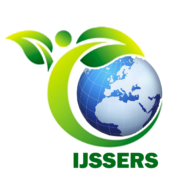The Relationship between eTwinning Activities and 21st Century Education and Teaching Skills
The aim of this research is to examine the relationship between eTwinning activities carried out by our teachers with the support of the European Commission and 21st century education and teaching skills. Additionally, the study aims to highlight the place and importance of 21st century skills in the education system, and to examine the sub-dimensions of these skills, as well as the characteristics and skills of teachers and students who acquire and impart these skills through activities. The research was conducted using the Descriptive (Survey) Cross-Sectional design, which is a non-experimental research method. The “Technological Pedagogical Content Knowledge (TPACK) Scale within the Scope of 21st Century Skills” was applied to 301 teachers who work in Bursa and conduct eTwinning activities. According to the results of Kolmogorov-Smirnov and Shapiro-Wilk tests, skewness and kurtosis values, and histogram graphs examined; it was determined that the pedagogical knowledge of the teachers in the age range of 46-55, the pedagogical content knowledge levels of the high school teachers, and the content knowledge levels were at an advanced level. The results also revealed that the teachers with the highest level of Technological Pedagogical Content Knowledge within the scope of 21st century skills were those aged between 46-55, working as primary school teachers.

